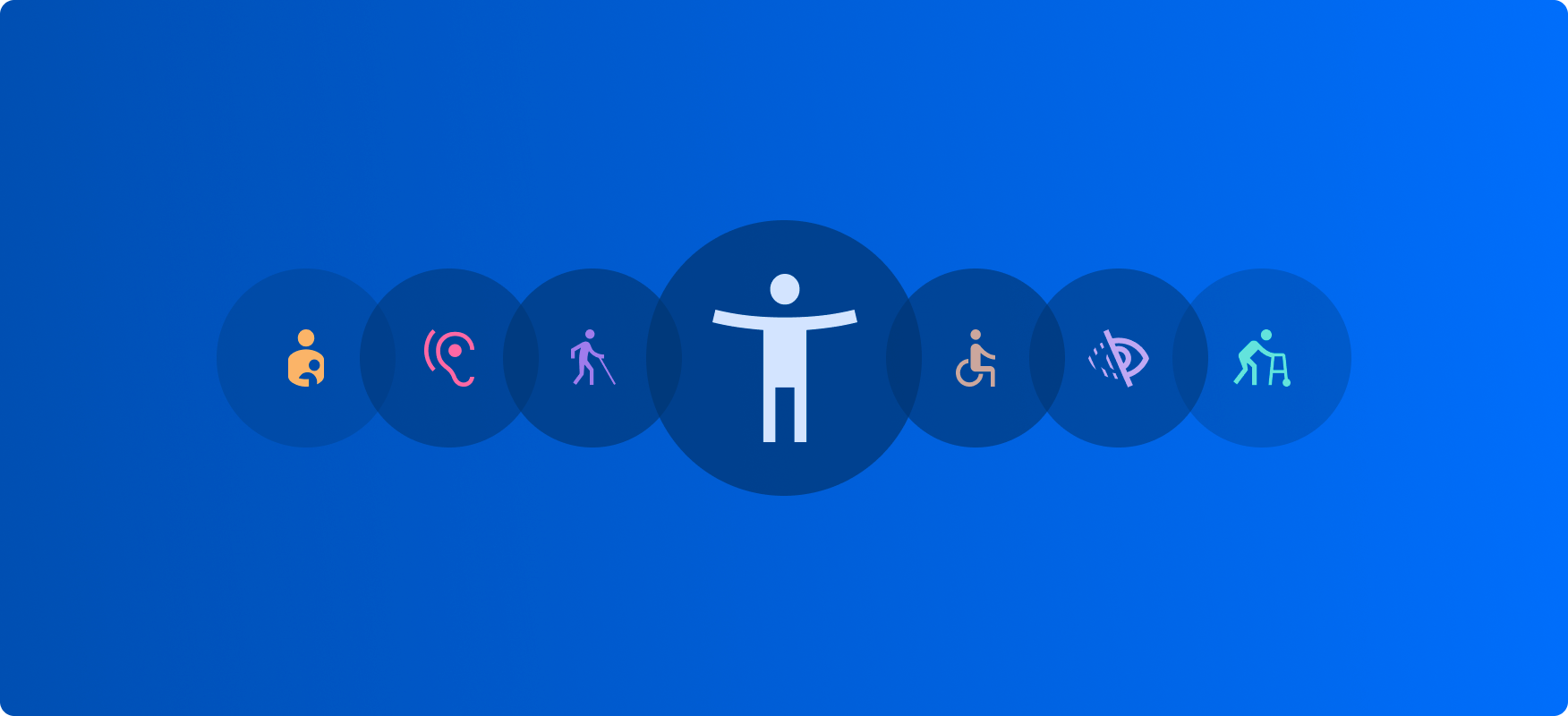Inclusive design
Guidelines for creating inclusive and accessible experience for ELMO’s users.
ELMO is committed to inclusive design and accessibility. Our team actively embraces a broader perspective, seek diverse input and collaborate to provide a great user experience for all users.
Inclusive design is a method of design that aims to make things as accessible and usable by as many people as possible, regardless of their abilities or backgrounds.
It involves considering different ways people might interact with a product, anticipating potential limitations or barriers, and finding creative solutions to overcome them.
Ultimately, inclusive design strives to foster a world where everyone feels valued, included, and empowered to participate fully.
Inclusive design includes accessibility, but accessibility is an attribute, while inclusive design is a method.
Accessibility focuses on ensuring that interfaces and technology can be used by people with disabilities (including hearing, cognitive, physical and visual disabilities).
Inclusive design goes beyond accessibility and takes into account a wide range of factors such as physical abilities, cognitive abilities, language preferences, cultural differences and more.
Designing for inclusivity allows us to expand the reach of our product to a broader audience with diverse abilities.
As humans, we constantly evolve and adapt to our surroundings, and it's essential that our products reflect and embrace this diversity. Our goal is to ensure that everyone can participate and engage with our product without facing unnecessary barriers or exclusion.
Exclusion can take different forms, including permanent, temporary, and situational:
- Permanent exclusion refers to long-term disabilities or limitations
- Temporary exclusion encompasses impairments caused by injury or illness that are not permanent, such as a broken arm or temporary loss of vision due to eye surgery.
- Situational exclusion arises from specific circumstances or contexts, such as noisy environments impeding hearing or bright sunlight hindering content readability on a device.
Designing for inclusivity is not limited to addressing the needs of specific small groups; it also enhances the usability of our product for a wider range of users. By addressing the challenges faced by one group, we create a more user-friendly and accessible product for everyone.
- Listen to customer feedback
- Seek feedback from people with experiences different from yours and your teams
- Empathise by using techniques like brainstorming, working with experts, and conducting interviews.
- Address the feedback, even if it doesn't align with your own experiences.
- Share solutions for validation to ensure the experience has made a more positive impact.
Designing an inclusive product is an iterative process that takes time to get right. During this process, be sure to examine your assumptions and be open to evolving knowledge and understanding.
Things to consider while building inclusive, accessible experiences for ELMO users.
This is not a comprehensive list. Product design and engineering are complex and cannot be solved with a checklist. Instead, consider this as a way to spot opportunities to improve our product.
Avoid binary representation of gender when you can reword using gender-neutral language.
Refrain from using gender-specific pronouns like “he”, “she” or “he or she” when referring to individuals of unspecified gender. Instead, it is acceptable to use “they”, “their” or “them” when referring to one person.
Choose non-gendered human images for avatars or emojis.
When gender is required for legal reasons, consider providing inclusive options, such as non binary, self-identify, or decline to state. Free-text field could be used so that people can specify the pronouns they use.
Try to reflect the diversity in name structure and ethnicities in your examples. Some cultures don’t use a Western-style name structure (given name followed by a family name). Some cultures may also have multiple or no family names.
Currently at ELMO, users have options to go by their legal names or other names. If other names have been nominated, this will be populated across our product. The users’ legal names will only be visible to admin and payroll for legal purposes.
When using imagery or illustrations, prioritise the ones that show diversity of age, race, disability, religion, orientation and gender.
An inclusive product is accessible to everyone. To learn more about making our product accessible, visit Accessibility